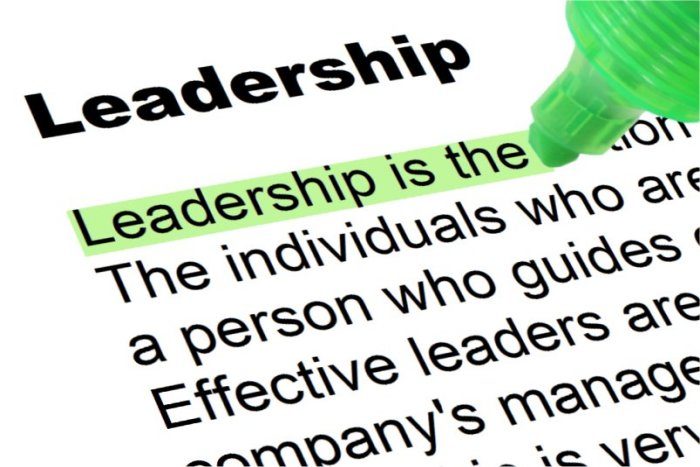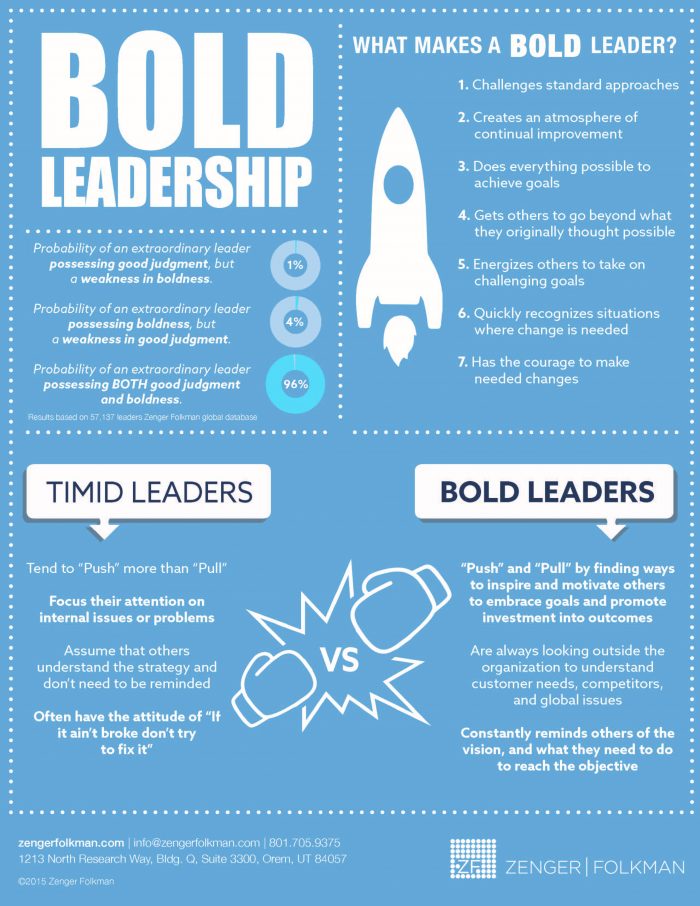This essaydescribes the meaning of leadership and defines the characteristics and qualities of effective leaders. It discusses the manner in which leadership skills can be developed and assesses the importance of leadership in organizations seeking to achieve specific aims. Leadership styles, such as servant leadership and transformational leadership, are analyzed and qualities such as boldness, good judgment and emotional intelligence are examined to show how they support effective leadership. The paper concludes with a discussion of what leadership means to different people and how leadership styles can reflect an individuals own subjective take on leadership and how it should be demonstrated.
[toc]
Topics
What is leadership?
How can leadership qualities be promoted?
How does a bad leadership experience impact a workplace culture?
Real-life leaders in the 20th century
Titles
Influential Leaders in Modern Times
Servant Leadership and Youth Programs
The Qualities That Define a Good Leader
Outline
I. Introduction
II. Body
A. Defining Leadership
B. What is Leadership?
C. About Leadership: Boldness and Good Judgment
D. Effective Leaders
E. Styles
F. Starting Early: Youth Leadership
G. Students
H. What Does Leadership Mean to Me?
I. What Does Leadership Mean to You?
J. Personal Leadership Philosophy
III. Conclusion
Title: Effective Leadership Skills and How to Acquire Them
This essaydescribes the meaning of leadership and defines the characteristics and qualities of effective leaders. It discusses the manner in which leadership skills can be developed and assesses the importance of leadership in organizations seeking to achieve specific aims. Leadership styles, such as servant leadership and transformational leadership, are analyzed and qualities such as boldness, good judgment and emotional intelligence are examined to show how they support effective leadership. The paper concludes with a discussion of what leadership means to different people and how leadership styles can reflect an individuals own subjective take on leadership and how it should be demonstrated.
Introduction
As Schyns and Schilling (2013) show, organizations thrive on effective leadership and suffer in numerous ways from bad leadership. Leaders are responsible for projecting the vision and values of an organization and for making decisions based on good judgment that will ultimately benefit all stakeholders in the long run. While there are many styles of leadershipfrom transformational leadership to democratic leadership to servant leadershipthere are certain characteristics that are common among all effective leaders.
Thesis Statement
This paper will examine leadership characteristics and show how they can be developed in tomorrows leaders.
[caption id="attachment_1229" align="alignnone" width="412"]

Figure 1. Leadership Definition
http://www.thebluediamondgallery.com/highlighted/images/leadership.jpg[/caption]
Body
What is Leadership? A Leadership Definition
Leadership is defined as the ability to empower followers (Conger 17) through guidance, example, and encouragement. Leaders vary in terms of style: some are bold and transform their followers by instilling in them a vision of what they can achieve and how to achieve it. Other leaders are humble and inspire their followers by serving them, identifying their needs and ensuring that those needs are fulfilled. In either case, the objective is the same: leaders seek to motivate their followers to reach their maximum potential. A leader is one whose primary concern is with the positive and progressive direction of the organization of which he is a part: his concern is not with his own standing or achievements but rather with the success of those around him. If a leader is not focused on helping his followers succeed, then he is more likely to be a destructive leader than a constructive and effective leader.
Leadership is not a new idea. Civilizations throughout all history have recognized leaders and celebrated good leadership in a variety of forms. Generals like Julius Caesar, statesman like Solon and Pericles, artists like Wagner and Shakespeare, religious men like Augustine, philosophers like Socrates, social justice advocates like Malcolm X and Martin Luther King, Jr.all of them have been lauded as possessing the qualities and characteristics of leadership. What is it that sets them apart? The Great Man thesis posited that leaders are bornyet as ideas of leadership have evolved over the centuries (especially in the modern era), new theories have formed that raise new questions about leadership and shed light on new aspects of leadership development. For example, many researchers are now focusing on how leadership skills can be promoted among adolescents (Morton & Montgomery, 2013; Larson & Tran, 2014; Marshall, Parker, Ciarrochi...
Their studies indicate that leadership youth programs can be helpful in providing adolescents the tools and experiences they will need in order to develop leadership traits. These same studies have shown that family stability and self-esteem also play a large role in helping young people to grow leadership qualities, such as emotional intelligence, good judgment, boldness and creativity. At the same time, not everyone possesses the same congenital gifts and talents, and some individuals are more predisposed to embracing leadership positions than others. Thus, even though research shows that leadership styles, skills, and characteristics can be learned, evidence still exists that some leaders are born with a natural talent for leadership.
About Leadership: Boldness and Good Judgment
Leaders can perform a number of services for organizations, groups, firms and followers. Some of what they are expected to do regardless of the environment or context of their role consists of the following criteria, as noted by Zenger and Folkman (2015): Leaders should:
-Challenge
-Create
-Achieve
-Inspire
-Energize
-Assess
-Decide
These seven characteristics help to define the concept of the leader. At the heart of this concept are the elements of boldness and good judgment. Together, these elements help support a leaders character and ability to execute the other aspects of leadership. Boldness helps a leader to challenge the status quo, to turn standard operating procedure on its head and look for new and innovative processes that can more effectively achieve organizational aims. Boldness helps a leader to be creative, to think outside the box, to collaborate with others and imagine possible solutions to problems. Boldness helps a leader to achieve success, to keep driving towards the goal despite setbacks and obstacles. Boldness inspires perseverance, dedication, commitment and creativity in others. It energizes a group of followers, who can draw emotional, intellectual and social support from a positive leader who is willing to give feedback, advice, guidance and assistance whenever necessarybut who is also willing to listen, include, consider, and reflect.
These latter qualities are part of the good judgment side of an effective leader. Good judgment stems from one who is reflective, who is thoughtful about what goes on around him, who considers the viewpoint of others, including all stakeholders, and who listens so as to better understand the facts. Good judgment helps a leader to make an accurate assessment of a situation, to gather all the relevant information and data, and to read the layout. Good judgment enables a leader to then decide on the right course of action, to try a procedure that makes the most sense given the information resented. Together, boldness and good judgment form the heart of good and effective leadership.

Figure 2. Bold leadership
http://zengerfolkman.com/infographic-bold-leadership/
Effective Leaders
Effective leaders are ones who can harness the skills and abilities they possess in order to marshal their followers towards the achievement of the organizational goal. The goal should be defined by the leader for the followers, with a vision of the process by which the goal may be achieved clearly provided to the followers so that they have a concrete picture of what is expected of them. For a leader to be followed, he must be clear, concise and comprehensive.
A leader must also be one who is trusted by his followers. This means a leader should possess qualities that support trust in a relationshipsuch as honesty, integrity and transparency. A leader should have the ability to communicate well with others: his body language should be expressive of confidence but also of empathy and interest in what his followers are doing. Empathy is a major part of emotional intelligence, which has been shown to play a fundamental role in effective leadership (Sanders, 2006; Cacamis & El Asmar, 2014). Emotional intelligence is the tool whereby an individual is able to read another persons emotional output and respond with the appropriate words, gestures, expressions or ideas that help to support, stabilize, and develop the other persons emotional state. Empathy enables an individual to put himself into another persons shoes, so to speakto see the world through that persons eyes and obtain a feeling for what that person is likely experiencing at the moment. In nursing, empathy is important in providing optimal quality care. In management, empathy is important because workers need to know that they are appreciated, respected, supported, and understoodotherwise conditions for resentment, ill will, and neglect can be fostered. A leader who demonstrates emotional intelligence is a leader who will work to create positive organizational culture that is based on mutual respect, appreciation, and consideration.
Styles of Leadership: Servant Leadership and Transformational Leadership
Servant leadership is a style of leadership that enables a leader to put the needs of followers before his. The…


 Figure 1. Leadership Definition
Figure 1. Leadership Definition 



